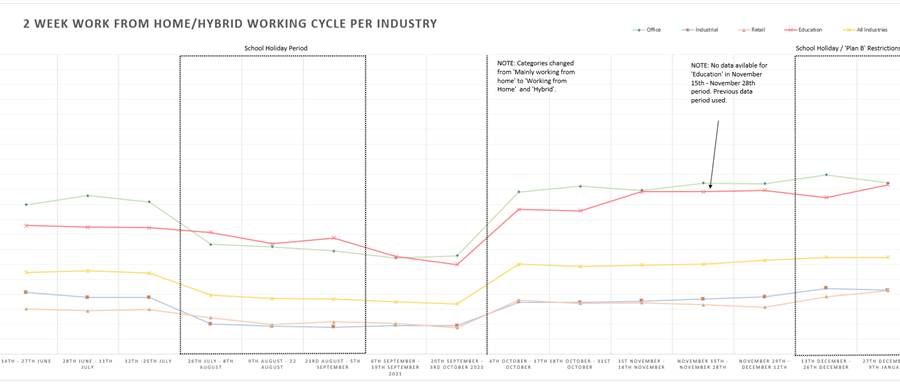We at Paul Basham Associates have been monitoring how people's working patterns have changed since the pandemic hit and we all had to work from home. Current data shows around 32% of people are working from home at some point during a working week.
In March 2020, a national lockdown was declared across Britain in response to the growing number of cases of Covid-19. The period of lockdown relied on many businesses switching to remote-working, enabled by modern technology and video communication apps such as ‘Microsoft Teams’ and ‘Zoom’. As video conferencing became an integral way of working and people saved time and money on commuting, the benefits of home working became realised, so much so that it has resulted in a significant shift in people’s commuting patterns, with many employees now choosing to work from home at least some of the time.
Utilising Office of National Statistics (ONS) data we have been following the numbers of people who have been working from home to identify whether the shift in travel behaviour caused by the pandemic was temporary or more of a societal change. In doing so we have been reviewing the data published by ONS every two weeks which details the proportions of people working from home, their place of work or a hybrid of the two across a variety of industries. These results have been plotted on the graph below to allow for us to easily review the trends over the past 6 months.
The results show that in June 2021 before the school summer holidays c. 27% of employees ‘mainly worked from home’, with this percentage being highest in office type employment with c. 53% WFH and lowest in Food and Accommodation services with c. 5% WFH. This reflects the nature of these varying industries abilities to work from home but also illustrates how the working from home practices have changed since before the Covid-19 pandemic where on average 5% of employees worked from home.
There was then a drop in percentages over the summer holiday period, and further reductions in September as a number of companies reopened their offices, although these levels still remained well in excess of pre-pandemic levels. It was in the following weeks that a further category was added which allowed for hybrid working patterns, which was important as it enabled those who work from home 2-3 days a week to be captured properly within the data rather than leaving room for ambiguity. Following the release of this new category of data the results have shown the overall number of people working from home rose from 17% to 30% and have since remained fairly stable since this new data classification.
In recent weeks the ‘Plan B’ restrictions have again instructed people to work from home where possible. As a result the most recent data published has identified a slight spike in the percentages of people working from home with the average increasing from 31.3% in the weeks prior to the restrictions, to 32.3% in the first period of data during Plan B. Although it is noted that this coincided with school holidays and festive office closures which will have had an effect on working patterns, whilst the 32.3% fails to account for people working from home on more days throughout the week. Plan B restrictions ended in England on 26/01, and it will be interesting to see how the data changes in the coming weeks as the data is released, however it is apparent that working from home has become a fundamental part of people’s working practices since the beginning of the pandemic.

